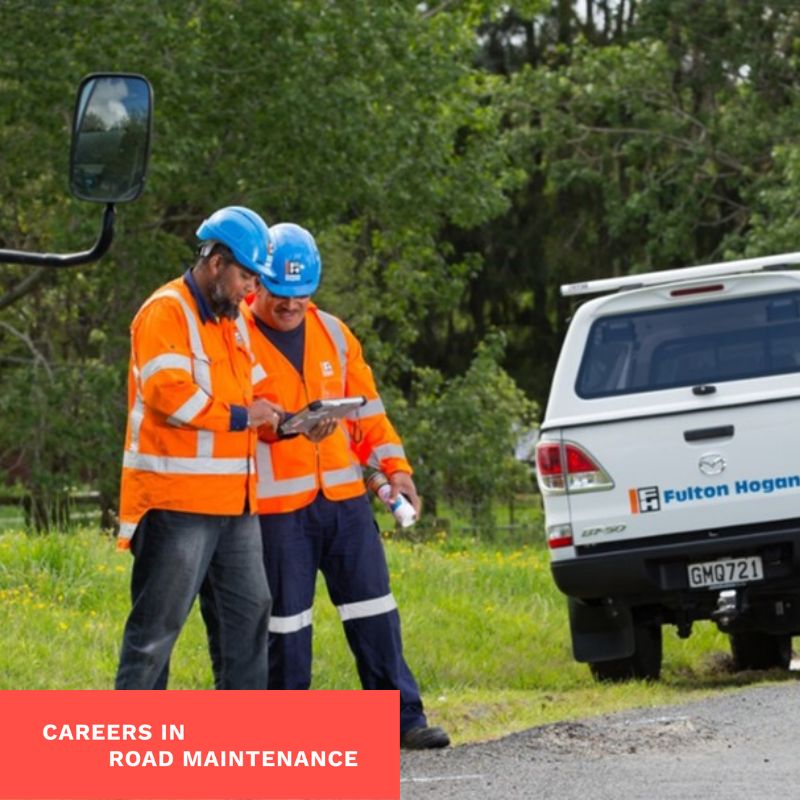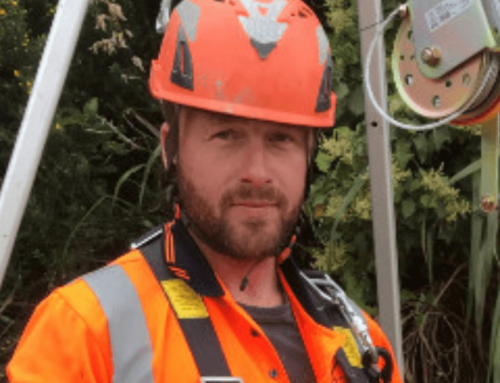The number of potholes on New Zealand roads has sparked furious debate over the past 12 months, even leading some members of the public to unwisely take matters into their own hands using little more than a wheelbarrow and a bag of concrete.
But that’s no way to fix potholes! Our advice if you are passionate about fixing potholes is to join one of the expert road maintenance teams that are constantly working to improve road surfaces so potholes don’t appear in the first place – and to repair them properly if they do.
We spoke to road asset management professional Bevan Sandison, Fulton Hogan’s General Manager of Engineering Solutions, to get the lowdown on the serious science of pothole prevention, remedy, and cure and find out how people passionate about potholes can chip in to help.
What causes potholes anyway?
The main cause of potholes is water getting into the ‘pavement’ layer below the upper asphalt or chipseal surface of the road. The pavement is the road’s foundation and is made of a specially blended aggregate designed to compact well and provide a stable base. Once water gets through the surface and into the pavement layer it acts as a lubricant and, with pressure from the traffic on top, the pavement deteriorates and potholes form.
Damage is also accelerated by heavy vehicles. An increase in vehicles’ maximum allowable weight and the additional pressure from a greater number of trucks carrying these heavier loads, combined with record breaking rainfall over the past year, has acted as one-two punch breaking down the defences of New Zealand’s road network, Bevan says.
Additionally limited budgets affect the amount of annual resealing that provides a waterproof barrier to help prevent water penetration.
“Waterproofing the road network is the best thing to avoid potholes forming in first place, that’s why we do chipsealing. Potholes should be avoidable if there’s adequate investment in maintaining New Zealand’s road network,” he says.
Repairing potholes properly takes skill and the right equipment.
So what is the best way to repair a pothole if one does arise?
Bevan says firstly it’s critical to square off the sides of the pothole to allow strong surface bonding between the old and the new material. Once that is done any loose material in the pothole is removed before a specially blended polymer modified emulsion asphalt mix crafted in road science laboratories is precisely worked into the gap.
Contrary to the word on the street, although not ideal and only a temporary repair, potholes can be fixed in wet conditions as the high-tech asphalt mix can is designed to cure quickly in-situ, Bevan says. Hot asphalt can also be used, but is less common due to the logistical challenge of keeping it at a high enough temperature to prevent it setting, as well as the waste of energy involved.
Different contractors experiment to find the best blend of asphalt mix to offer the most durable fix, Bevan says, although they do have to adhere to strict standards.
“Products are constantly evolving to do the best job and last as long as possible – there’s a lot of technology going on in the background to develop that.”
Bevan says DIY solutions applied by well-meaning residents are never going to cut it.
“Concrete is too rigid and will crack under traffic loading, increasing time and cost for repairs and meaning more people will be held up on our roads whilst we fix the mess. People are best to report potholes to Waka Kotahi or their local authority and let contractors handle them properly.”
He appreciates members of the public reporting potholes because, as soon as his teams know about a severe pothole, they can get onto it as quickly as possible.
“Not all potholes are created equal, some are right in the middle of a traffic lane and if a couple of trucks go over them they can blow out quickly and become quite deep.”
One of the Fulton Hogan’s newest ’employees’ is an artificial intelligence tool developed in collaboration with a leading New Zealand technology company. The AI, in conjunction with a vehicle mounted video camera, identifies and records the size and location of road defects such as surface cracking. This allows preventative treatment before potholes form during rainfall, Bevan says.
“It’s cool cutting-edge technology, which allows us to be more effective and efficient, while improving safety for people doing road inspections.”
Safety is also a factor in the decision to trial a new automated boom that can be attached to a truck and controlled from inside to remotely fix potholes without operators having to get out on the road in busy traffic. The boom controls an arm that sprays a more pliable, less dense, asphalt mix that automatically binds itself when it hits the road.
Bevan is full of praise for the road crew repairing potholes and tackling other crucial road maintenance crises they are responsible for, such as responding to slips in the middle of the night to make sure communities stay safe.
“They are heroes for what they do and deserve maximum credit and praise.”
How can you help? Take up the tools of the trade!
All of this combines to mean there is more work ahead in road maintenance than ever before. Fulton Hogan alone repaired more than 18,000 potholes across the 4,600km of state highway it is responsible for during the past year.
Career seekers looking to take up the tools of the trade can often land a job, or a spot on an apprenticeship or cadetship programme, by contacting their local road maintenance contractor directly, Bevan says.
He says contractors are looking for people who can use their initiative, see a problem and put it right before there’s an accident, and want to contribute to the community in a positive way. There’s also a need for people with good computer skills to support efforts to record and analyse data to improve the efficiency of repair efforts.







